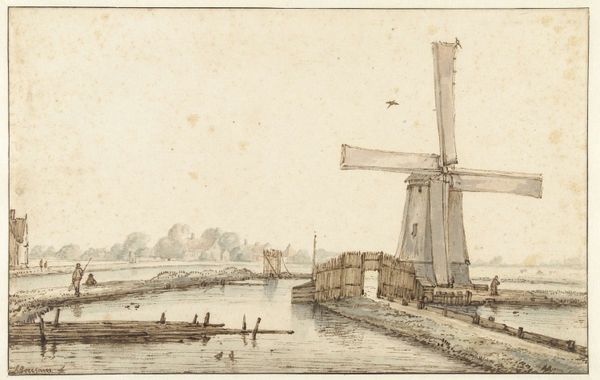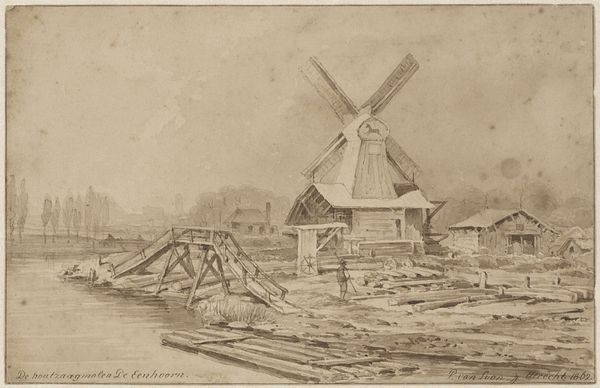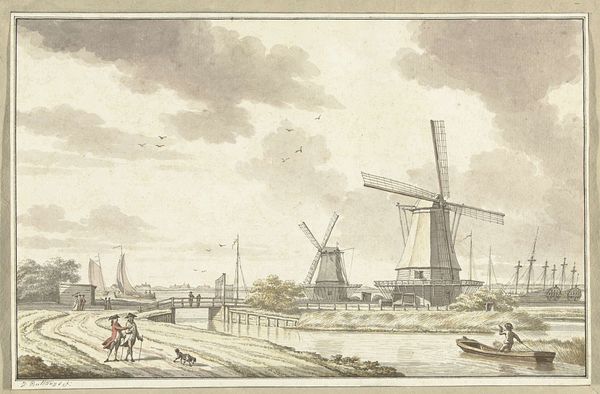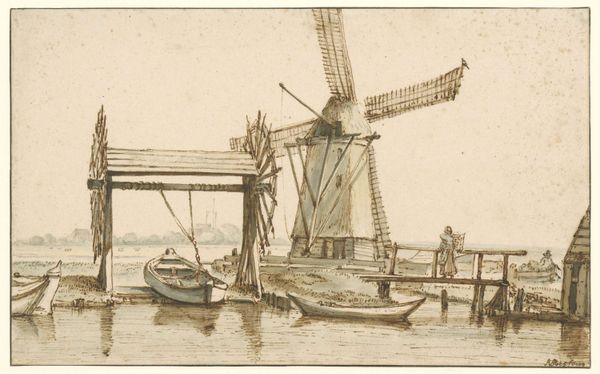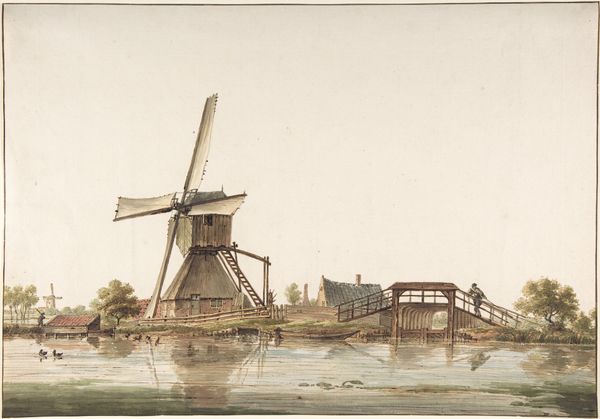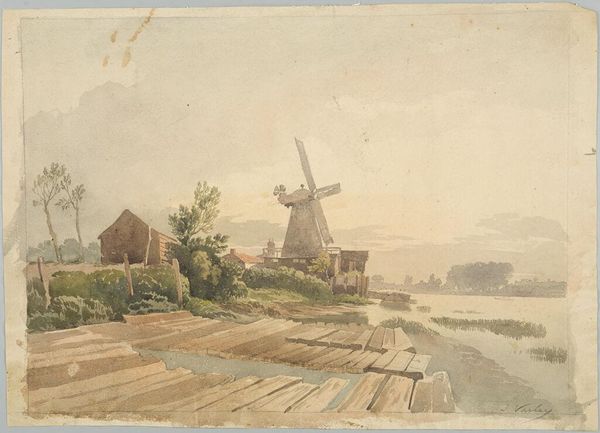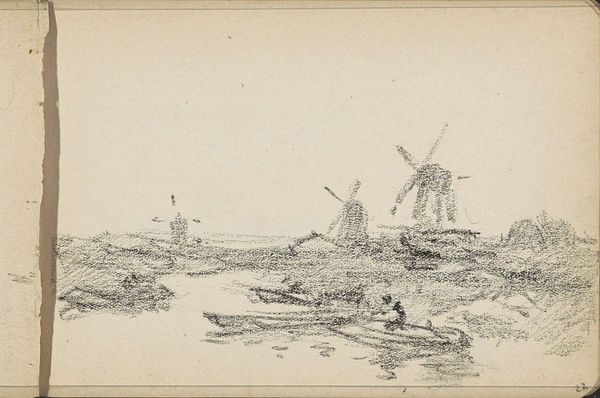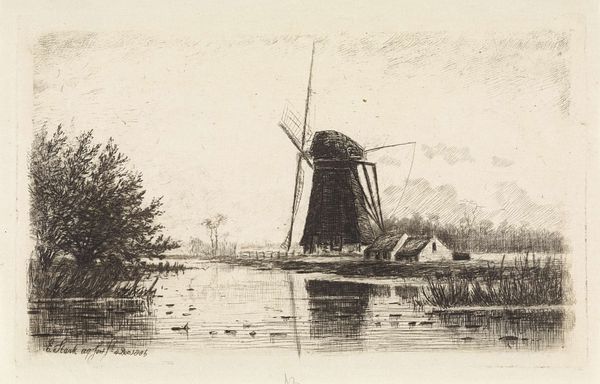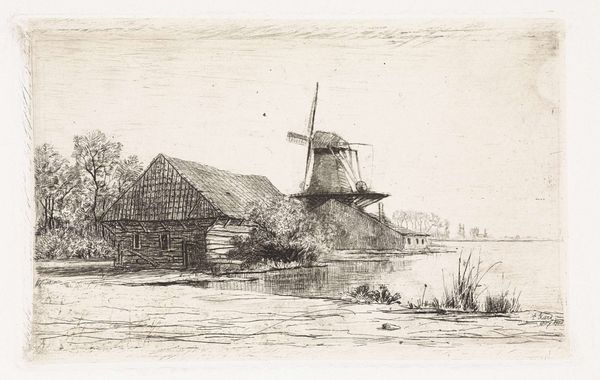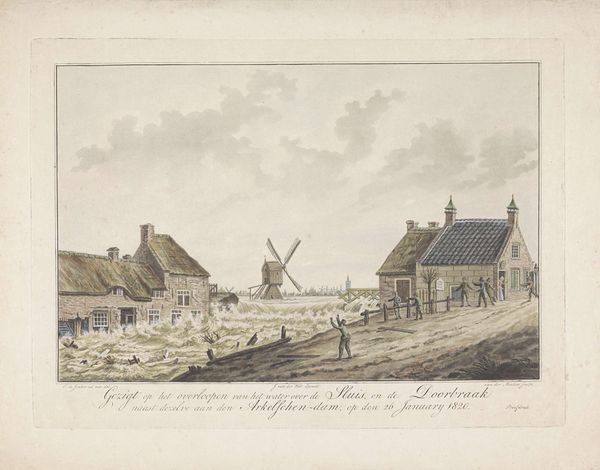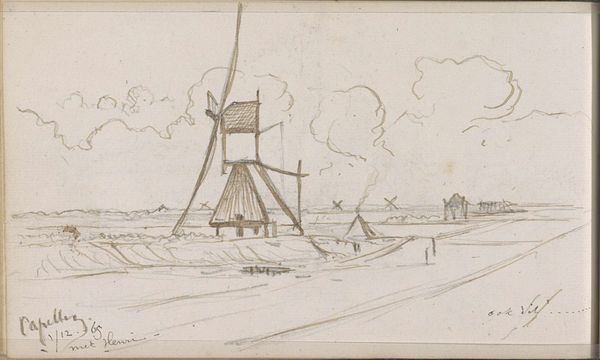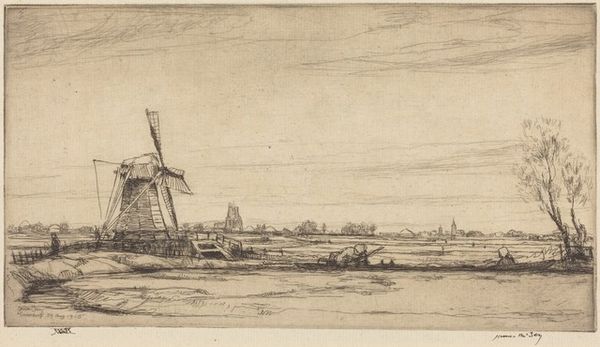
drawing, ink, pencil
#
drawing
#
dutch-golden-age
#
landscape
#
ink
#
pencil
#
cityscape
#
realism
Copyright: Rijks Museum: Open Domain
This is "Mills and houses on the Rotte," a sepia drawing made by Johannes Tavenraat in 1864. In this scene, Tavenraat gives us a glimpse into the Dutch landscape, dominated by water and windmills. Windmills in the Netherlands are not just picturesque features; they’re symbols of Dutch ingenuity and resourcefulness. They were crucial in land reclamation and water management, literally shaping the country’s geography and enabling agriculture and settlement in low-lying areas. By the nineteenth century, they had become emblems of national identity. Tavenraat’s choice to depict this scene speaks to a broader cultural context. The Netherlands has a long tradition of landscape painting, closely tied to national pride and identity. To understand the painting better, one might delve into historical records of land use, engineering, and the cultural meanings attached to the Dutch landscape. Looking at other art of the time and its reception can tell us much about Dutch identity. Ultimately, art history helps us appreciate how art reflects and shapes a nation’s self-image.
Comments
No comments
Be the first to comment and join the conversation on the ultimate creative platform.
